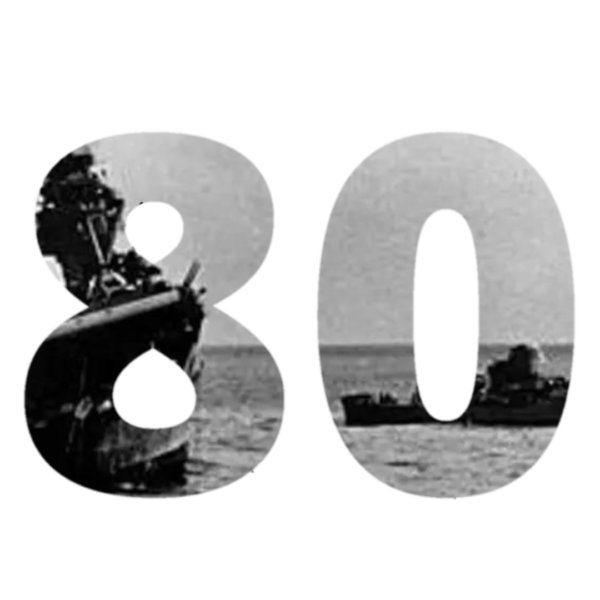This year, on June 4, marked the 80 year anniversary of the Battle of Midway.
In the spring of 1942, Japan was at the height of its power. Its invasion of the Pacific had been so successful that plans were laid to invade Australia, New Guinea, Midway Island, and Hawaii. First though, they had to get rid of the American aircraft carriers in the Pacific. The aircraft carriers had escaped Pearl Harbor, meaning that there was still a threat to the Japanese Navy.
On May 4-8, the Battle of the Coral Sea happened. This was the first time that the fleets didn’t actually see each other — all of the fighting was done in the air. Two valuable Japanese aircraft carriers were put out of action. Several of their warships and around 100 of their aircraft carrier planes were also lost. The United States on the other hand lost only one aircraft carrier, two other ships, and 65 planes. This battle seriously halted the Japanese advance. They were soon to discover what a formidable foe their enemy was.
In the early months of 1942, Navy cryptanalysts had begun cracking the code of the Japanese. Led by Joseph J. Rochefort, they learned of a Japanese plan to attack a position called “AF.” To find out if “AF” was Midway, they did a simple trick. They sent a false message that Midway was low on fresh water. After the message was sent, they were able to decipher a Japanese message that “AF” was low on freshwater. With confirmation AF was Midway, Station Hypo in Hawaii were able to decode even more, such as the date of the attack and order of the battle.
The Japanese main force of ships heading toward Midway included four aircraft carriers (Kaga, Akagi, Soryu, Hiryu), seven battleships, 150 support ships, 248 carrier aircraft and 15 submarines. The American force was substantially smaller, with three aircraft carriers (Enterprise, Hornet, and Yorktown), 50 support ships, 233 carrier aircraft, 127 land based aircraft, and eight submarines. This meant that they were outnumbered almost 2-1.
On June 3, 1942, a Consolidated PBY Catilina flying a scouting mission discovered part of the Japanese fleet southwest of the atoll. Additional sightings were reported throughout the day. B-17 Flying Fortresses and PBYs made attacks on the sighted force, but with limited success. Heavy anti-aircraft fire was able to drive them away. That night, four PBY-5A launched an attack with torpedoes on the ships, also with limited success. Thus ended the first day of the battle.
Right after midnight on June 4, Admiral Nimtz advised the United States force to head toward the Japanese main body, which he noted to be 574 miles away. Shortly after dawn, a patrol plane spotted two Japanese aircraft carriers with their escorts, along with planes heading toward Midway at 320 degrees, 150 miles away. At 0630, Japanese Aichi D3A, Nakajima B5N, and A6M Zeros attacked Midway. Brewster F2A Buffalos, F4F Wildcats and Marine Corps personnel defending the island suffered terrible losses, losing 17/26 aloft. The Japanese barely inflicted any damage to the island at all.
Over the next two hours, the Japanese annihilated repeated attacks from American aircraft such as Marine Corps Douglas SBD (“Dauntless”) and Vought SB2U Vindicator scout bombers from VMSB-241, Navy Grumman TBF Avenger torpedo bombers from VT-8 detachment, and U.S. Army Air Force torpedo-carrying Martin B-26 Marauder. B-17s were able to launch an attack without success, but didn’t lose any aircraft.
Douglas TBD Devastators were next to attack. Although they were nearly destroyed from AA guns and fighters, they cleared the sky for SBD Dauntless dive bombers. In five minutes, the U.S. was able to change the course of the war, taking out 3/4 of the Japanese aircraft carriers. Only the Hiryu was able to escape from it. With its aircraft it is able to hit the USS Yorktown three times and disable it. In retaliation, American bombers would destroy it later in the day with four direct hits. Japanese plans to capture Midway were crushed.
On June 6, they were able to sink a Japanese heavy cruiser. Yorktown was also hit by two torpedoes, making the ship list to its port side. Later in the day, Japanese submarine I-168 torpedoes the Yorktown, in which it finally sinks. The Battle of Midway was over, along with Japan’s plans to take over the Pacific.
Although the Americans had been outnumbered 2-1, they somehow managed to win the Battle of Midway with a lot less casualties than the Japanese. US casualties were one destroyer, one carrier, 150 aircraft and 307 personnel. The Japanese on the other hand suffered horrific casualties, with one destroyer, four aircraft carriers, one cruiser, 248 aircraft, and 3,057 personnel killed!
This single battle changed the course of the war. From then on, the Japanese would be in a slow retreat all the way back to Japan. The U.S. Navy would be the dominant power in the Pacific.
– by Artorius G., Escalante
Feature image caption: June 4 marked 80 years since the Battle of Midway.
Read more by this writer in Chivalry Over War-Torn Europe.

